Federal and State Listed Species of Texas:
Texas prairie dawn
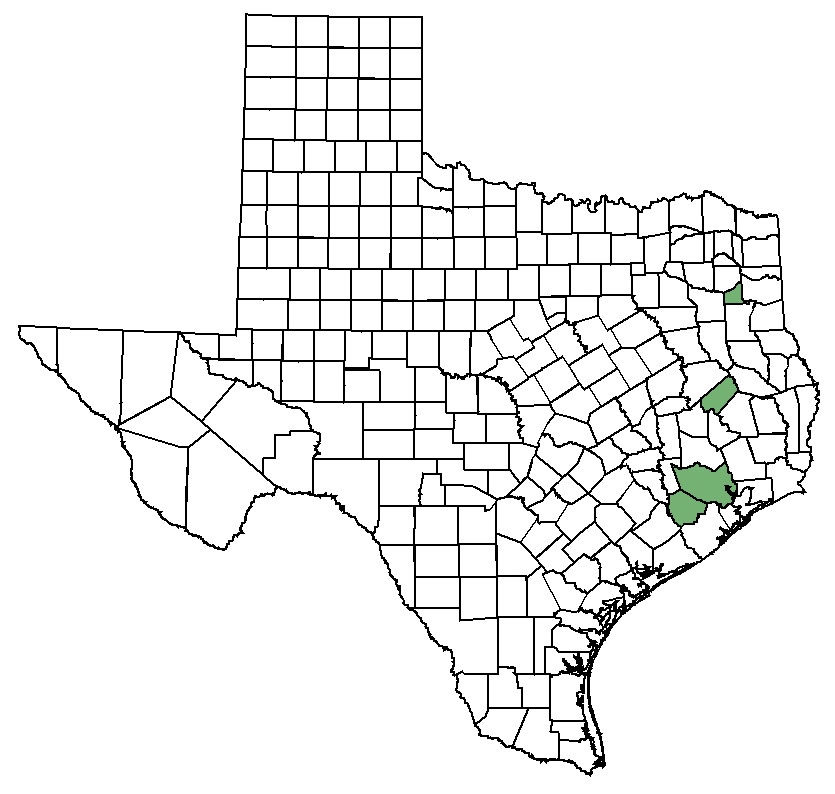
Current
null
null
Distribution map of Texas prairie dawn (Hymenoxys texana).
Global Location
Texas prairie dawn is only known from the Western Gulf Coastal Plain (formerly Gulf Prairies) and South Central Plains (formerly Piney Woods) in Fort Bend, Gregg, Harris, Trinity and Waller counties.
null
Credit:
Description
Texas prairie dawn is a delicate, 3.5-18 cm tall annual with a green to reddish, 4-7+ cm wide rosette of paddle-shaped leaves. These leaves persist on the plant past the blooming period. Although most of the leaves are at the plant’s base, a few smaller leaves grow from the thin sprawling floral stalks. Leaves are ≤4 cm long, have three conspicuous veins on their underside, and can be shallowly lobed, saw-toothed, or smooth-edged. Two rows of overlapping green, leaf-like structures closely cup the outside base of the flower head. The inner row usually has a purple dot on each structure. Flower heads are yellow with no obvious “petals” (actually tiny flowers called ray florets) because they are hidden behind the leaf-like structures. The flat-topped flower head is composed of a tight disc of 40-75+ very small, yellow flowers. Each of these is called a disc floret and is only 1.5-2.1 mm long. The fruits that develop from this disc are cylindrical to pyramidal and are 1.5-2 mm long.

Texas prairie dawn has two types of leaves: green to reddish rosette leaves, which persist on the plant after flowers close, and a few smaller leaves on the floral stalks.
Credit: Steve Young - Mercer Arboretum and Botanic Gardens
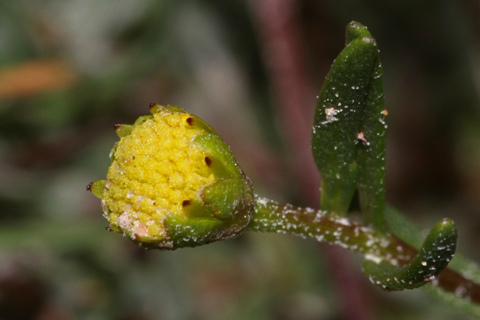
Texas prairie dawn has two rows of overlapping leaf-like structures which cup the flower head. The inner row usually has a purple dot on each structure. The flower head is composed of 40-75+ very small, yellow disc florets.
Credit: Terry Hibbitts
null
Credit:
Similar Species
A new species, pygmy prairie dawn (Hymenoxys perpygmaea), has recently been described from Lamar County (Mink et al. 2012). Pygmy prairie dawn is more erect, has smaller rosettes at 1.3-2.4 cm wide, has shorter-lived basal leaves (which wither before or during flowering), and has 17-32 disc florets.
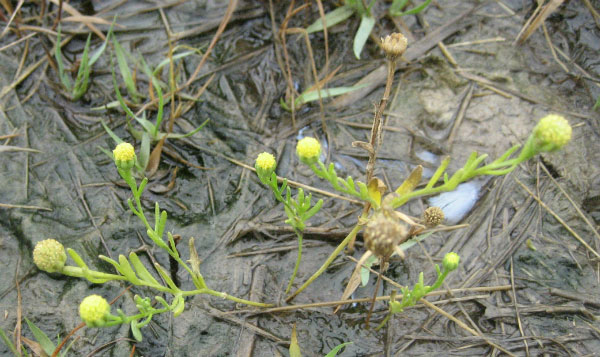
Pygmy prairie dawn’s flower heads are made up of a tight cluster of 17-32 disc florets. Note the lack of basal rosette.
Credit: Jason Singhurst - Texas Parks & Wildlife Dept.
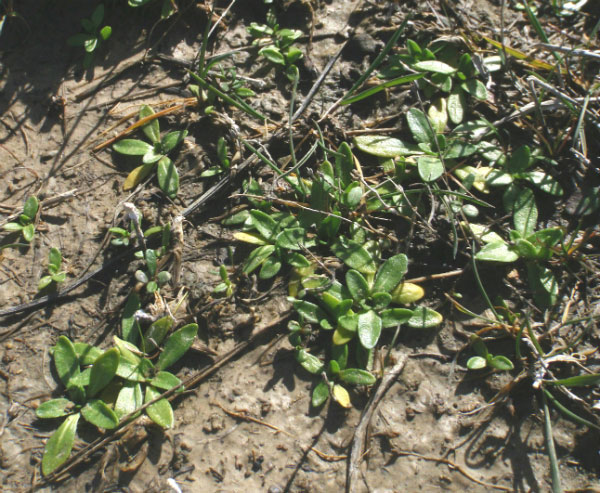
Pygmy prairie dawn has smaller rosettes, which wither before or during flowering.
Credit: Jason Singhurst - Texas Parks & Wildlife Dept.
null
Credit:
null
Credit:
null
Credit:
null
Credit:
Floral Characters
nullLeaf Characters
nullnull
Credit:
null
Credit:
null
Credit:
Habitat
Texas prairie dawn occurs at the base of small mounds in grasslands in poorly drained, sparsely vegetated areas. It is also found in almost barren areas on slightly salty soils.
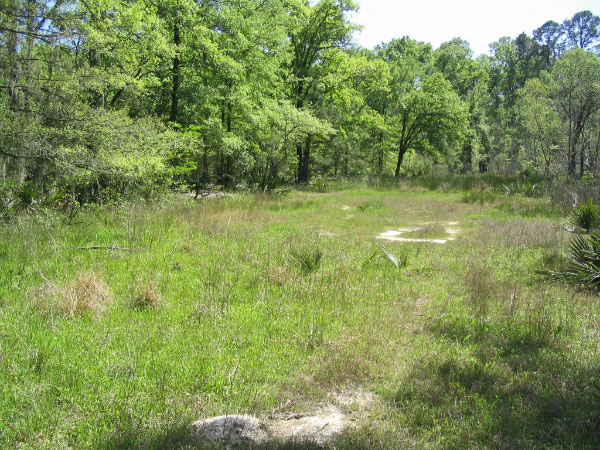
Habitat of Texas prairie dawn.
Credit: Jason Singhurst - Texas Parks & Wildlife Dept.
Life Cycle Events
Flowering occurs from February to April. By summer the habitat dries out and the only traces of Texas prairie dawn are the seeds in the soil.
Survey Season
As an annual, Texas prairie dawn can mostly easily be found in the spring around February, March and April when the plant is in bloom. The plant can be identified from the basal rosette of leaves, which forms just prior to flowering and withers and dies after seed dispersal.
Citations
- Mink, J., J. Singhurst, and W. Holmes. 2012. A new species of Hymenoxys (Asteraceae, Helenieae, Tetraneuridinae) from Texas. Novon. 22: 56-59.
Comments
As is true for many rare plants, the main threat to Texas prairie dawn is habitat destruction. Texas prairie dawn populations are mostly located within Harris County, an area of rapid development. The former common name, Texas bitterweed, did not help the plant’s image. To alleviate the negative attitude towards the plant, in 1989 the U.S. Fish and Wildlife Service held a contest, and school children were asked to think up new common names for the plant. Hence the common name Texas prairie dawn.